Podcast: Play in new window | Download
Subscribe: Apple Podcasts | RSS
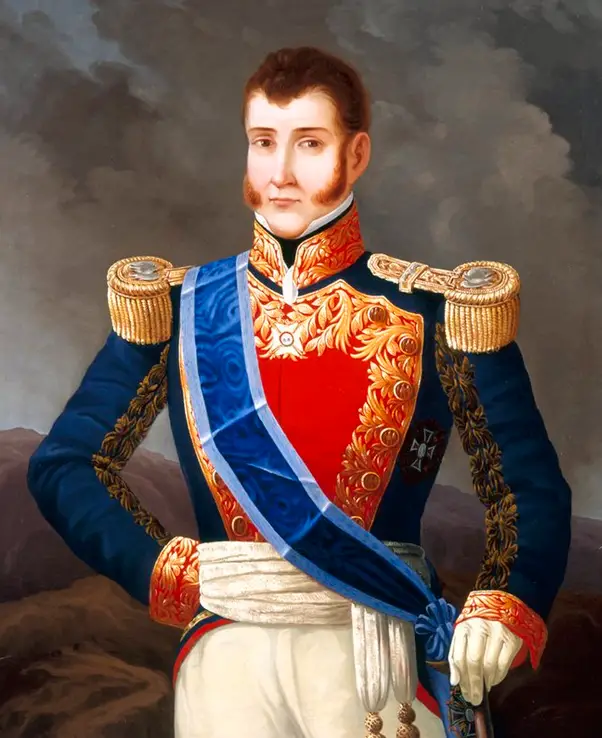 On a warm July day in 1822, the Metropolitan Cathedral of Mexico City echoed with the sounds of celebration. Agustín de Iturbide, a man of Basque descent born in Valladolid (now Morelia), Mexico, in 1783, stood before a cheering crowd as the heavy imperial crown was placed upon his head. He became Agustín I, the first Emperor of Mexico, a nation freshly independent from Spain after a decade of brutal conflict. His reign, however, was a fleeting dream—lasting less than a year before collapsing under the weight of political dissent, economic turmoil, and his own missteps. What followed was a saga of exile, execution, and a scattered legacy that continues to intrigue historians and monarchists alike. This is the story of Mexico’s first imperial family—what happened after their brief moment of glory, where their descendants went, and what they are doing in the first decades of the 21st Century.
On a warm July day in 1822, the Metropolitan Cathedral of Mexico City echoed with the sounds of celebration. Agustín de Iturbide, a man of Basque descent born in Valladolid (now Morelia), Mexico, in 1783, stood before a cheering crowd as the heavy imperial crown was placed upon his head. He became Agustín I, the first Emperor of Mexico, a nation freshly independent from Spain after a decade of brutal conflict. His reign, however, was a fleeting dream—lasting less than a year before collapsing under the weight of political dissent, economic turmoil, and his own missteps. What followed was a saga of exile, execution, and a scattered legacy that continues to intrigue historians and monarchists alike. This is the story of Mexico’s first imperial family—what happened after their brief moment of glory, where their descendants went, and what they are doing in the first decades of the 21st Century.
Agustín de Iturbide’s journey to the throne was an unlikely one. Born into a privileged Creole family, he initially sided with the Spanish Crown during the Mexican War of Independence, earning a reputation as a skilled military officer. Yet, in 1820, he pivoted dramatically, aligning with revolutionary forces under the Plan de Iguala. This plan promised independence from Spain, equality between Spaniards and Creoles, and the preservation of Roman Catholicism as the state religion—principles known as the “Three Guarantees.” Leading the Army of the Three Guarantees, Iturbide marched into Mexico City on September 27, 1821, securing Mexico’s independence with the Treaty of Córdoba. The Spanish monarchy rejected the treaty, but the deed was done: Mexico was free.
With no European royal willing to take the Mexican throne, Iturbide’s supporters—backed by conservative elites and the military—proclaimed him emperor on May 19, 1822. His coronation was a grand affair, blending European pomp with Mexican symbolism, including a flag he designed featuring green, white, and red stripes that endure to this day. His wife, Ana María Huarte, became Empress, and their children were titled princes and princesses of the new empire. The House of Iturbide was born, its legitimacy enshrined by the Mexican Congress on June 22, 1822, as a hereditary constitutional monarchy.
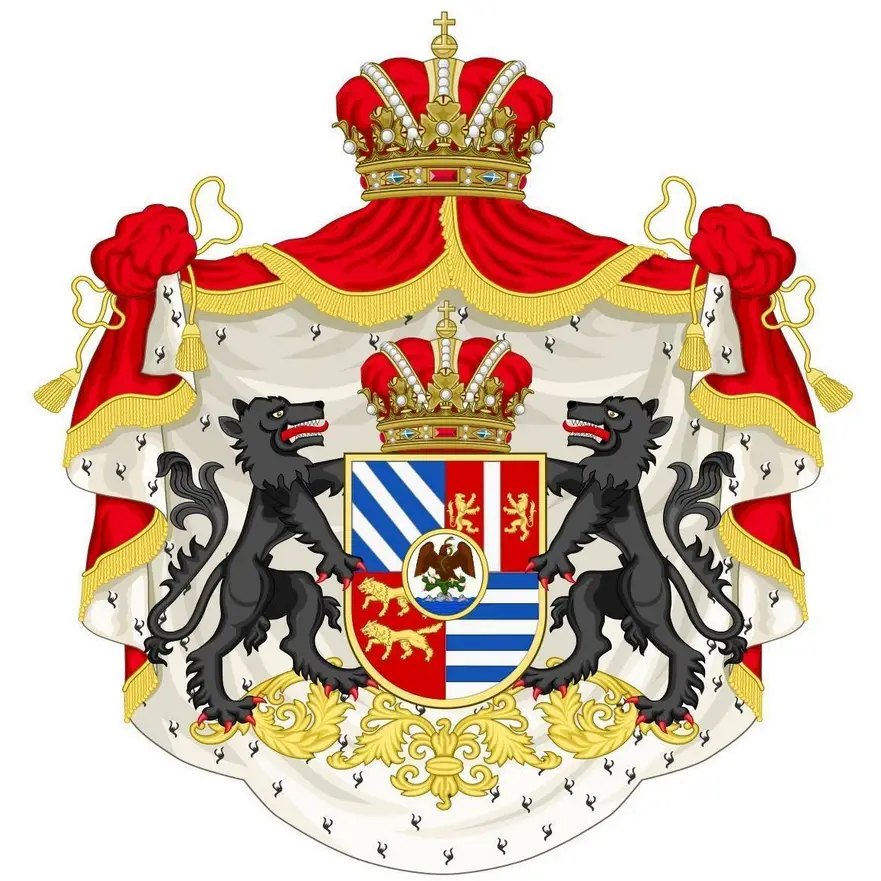 The dream of empire quickly unraveled. Iturbide’s rule was marked by extravagance and authoritarianism. He lived lavishly, demanded a well-paid army, and imposed heavy taxes—alienating the elite who had once supported him. His decision to dissolve Congress in October 1822 and replace it with a handpicked junta sparked outrage, breaking his coronation oath and fueling rebellion. Figures like Antonio López de Santa Anna and Vicente Guerrero, once allies, turned against him. The Plan of Casa Mata, proclaimed in 1823, called for a republic and declared Iturbide’s election as emperor invalid. Unable to pay his troops or quell the uprisings, Iturbide abdicated on March 19, 1823, just ten months after his coronation.
The dream of empire quickly unraveled. Iturbide’s rule was marked by extravagance and authoritarianism. He lived lavishly, demanded a well-paid army, and imposed heavy taxes—alienating the elite who had once supported him. His decision to dissolve Congress in October 1822 and replace it with a handpicked junta sparked outrage, breaking his coronation oath and fueling rebellion. Figures like Antonio López de Santa Anna and Vicente Guerrero, once allies, turned against him. The Plan of Casa Mata, proclaimed in 1823, called for a republic and declared Iturbide’s election as emperor invalid. Unable to pay his troops or quell the uprisings, Iturbide abdicated on March 19, 1823, just ten months after his coronation.
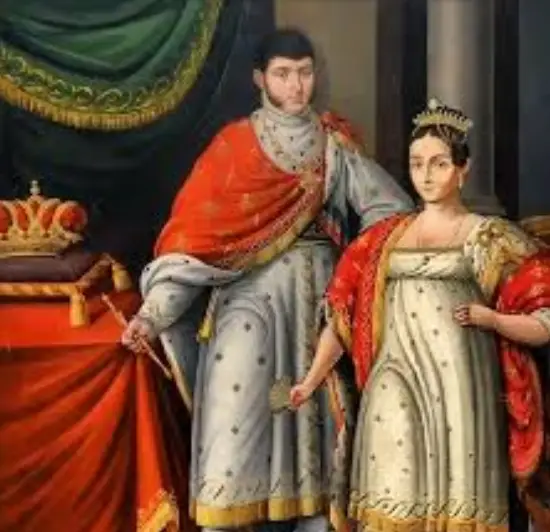 The imperial family faced exile. On May 11, 1823, Iturbide, Ana María, and their eight surviving children boarded the British ship Rawlins bound for Livorno, Italy. Congress granted them a pension but declared Iturbide a traitor, outlawing his return under penalty of death—a decree he may not have fully grasped. In Italy, the family rented a modest home, and Iturbide penned his memoirs, reflecting on his brief reign. Spain’s pressure soon forced them out of Italy, and they relocated to England, settling near London. There, the family lived quietly, their children educated in British schools, while Iturbide grappled with his lost empire.
The imperial family faced exile. On May 11, 1823, Iturbide, Ana María, and their eight surviving children boarded the British ship Rawlins bound for Livorno, Italy. Congress granted them a pension but declared Iturbide a traitor, outlawing his return under penalty of death—a decree he may not have fully grasped. In Italy, the family rented a modest home, and Iturbide penned his memoirs, reflecting on his brief reign. Spain’s pressure soon forced them out of Italy, and they relocated to England, settling near London. There, the family lived quietly, their children educated in British schools, while Iturbide grappled with his lost empire.
In 1824, rumors of a Spanish reconquest reached Iturbide in England. Supporters urged him to return and lead Mexico against the threat. On July 14, 1824, he landed in Tamaulipas with his wife and two youngest children, unaware of the death sentence awaiting him. Recognized almost immediately, he was arrested, tried by the local legislature, and executed by firing squad on July 19, 1824, in Padilla. His last words reportedly urged Mexicans to unite. Ana María and the children, spared from punishment, retreated to the United States, settling in Philadelphia. Iturbide’s body was buried unceremoniously in Padilla’s parish church, though his remains were later moved to Mexico City in 1838 under President Anastasio Bustamante, who honored him as a hero of independence.
The widowed Empress Ana María lived out her days in exile, raising her children in modest circumstances until her death in 1861. For more information about Empress Ana María, please see Mexico Unexplained episode number 79. The fall of the First Empire marked the end of Mexico’s brief monarchical experiment under Iturbide, but his family’s story—and their claim to imperial legacy—continued to evolve in unexpected ways.
The Iturbide children faced a world far removed from the palaces of Mexico City. Agustín Jerónimo, the eldest son and Prince Imperial, born in 1807, became the titular head of the House of Iturbide after his father’s death. Educated at Ampleforth College in England, he later served as a military officer in South America under Simón Bolívar and as a diplomat for the Mexican Republic in London and Washington. Unmarried and childless, he died in New York City in 1866, buried beside his mother in Philadelphia. His siblings pursued varied paths: some died young, while others faded into obscurity in Europe or the United States.
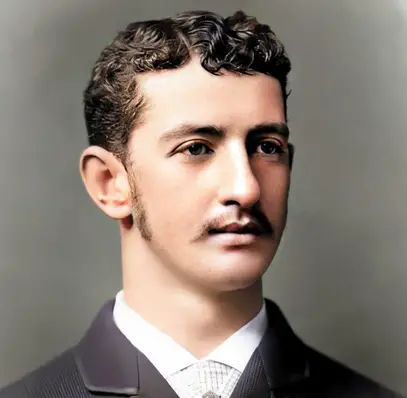 The family’s fortunes shifted with the rise of the Second Mexican Empire under Maximilian I, a Habsburg archduke installed by Napoleon III of France in 1864. Maximilian, childless himself, sought to legitimize his rule by linking it to Iturbide’s legacy. In 1865, he adopted two of Agustín I’s grandsons—Agustín de Iturbide y Green and Salvador de Iturbide y Marzán—as heirs, granting them the title “Princes of Iturbide” with the style of Highness. Agustín Jerónimo, still alive, relinquished his claim to the throne in favor of Maximilian, preserving the family’s symbolic role. This adoption merged the Iturbide line with Habsburg prestige, though it proved short-lived.
The family’s fortunes shifted with the rise of the Second Mexican Empire under Maximilian I, a Habsburg archduke installed by Napoleon III of France in 1864. Maximilian, childless himself, sought to legitimize his rule by linking it to Iturbide’s legacy. In 1865, he adopted two of Agustín I’s grandsons—Agustín de Iturbide y Green and Salvador de Iturbide y Marzán—as heirs, granting them the title “Princes of Iturbide” with the style of Highness. Agustín Jerónimo, still alive, relinquished his claim to the throne in favor of Maximilian, preserving the family’s symbolic role. This adoption merged the Iturbide line with Habsburg prestige, though it proved short-lived.
Agustín de Iturbide y Green, born in 1863 to Ángel María de Iturbide (Agustín I’s second son) and Alice Green, an American from a prominent Maryland family, was just two years old when Maximilian adopted him. His parents handed him over in exchange for a pension, though Alice soon regretted the decision and reclaimed him after Maximilian’s regime crumbled. The Second Empire fell in 1867 when Maximilian was executed by republican forces under Benito Juárez. Agustín y Green returned to his family in Washington, D.C., later studying at Georgetown University and a Mexican military academy. His dreams of restoring the monarchy led to conflict with President Porfirio Díaz, who exiled him in 1890 after he criticized the regime. He returned to Georgetown as a professor of Spanish and French, marrying Louise Kearney in 1915. Childless, he died of tuberculosis in 1925.
Salvador de Iturbide y Marzán, born in 1849 to Salvador María de Iturbide (Agustín I’s third son) and Rosario Marzán y Guisasola, took a different path. Adopted by Maximilian alongside his nephew Agustín y Green, Salvador married Baroness Gizella Mikos de Taródháza in Hungary and had three daughters. His eldest, María Josepha Sophia, born in 1872, became the titular head of the House of Iturbide after Agustín y Green’s death in 1925, as he left no heirs. Salvador died in 1895, but his lineage survived, unlike his cousin’s.
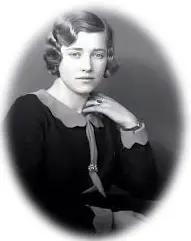 María Josepha Sophia de Iturbide, a Hungarian-born princess, never married and died in 1949. The headship of the House of Iturbide passed to her niece, María Gisela, who died in 1989. The title then transferred to Maximilian Gustav Albrecht Richard Agustín von Götzen-Iturbide, born in 1944 in Hungary to María Gisela’s sister and a German count. Maximilian, a 3x-great-grandson of Agustín I through Salvador’s line, is the current head of the House of Iturbide as of the first airing of this episode, March 9, 2025. He lives in Perth, Australia, with his wife, Maria Anna de Franceschi, who descends from Venetian and Croation noble houses with titles and landholdings that date back to the 12th Century. The couple has two children, Ferdinand Leopoldo, known as “Freddy,” born in 1992 and Emanuella Isabella born in 1997. If this is confusing or hard to follow, please see this episode’s transcript at mexicounexplained.com for a simplified family history chart.
María Josepha Sophia de Iturbide, a Hungarian-born princess, never married and died in 1949. The headship of the House of Iturbide passed to her niece, María Gisela, who died in 1989. The title then transferred to Maximilian Gustav Albrecht Richard Agustín von Götzen-Iturbide, born in 1944 in Hungary to María Gisela’s sister and a German count. Maximilian, a 3x-great-grandson of Agustín I through Salvador’s line, is the current head of the House of Iturbide as of the first airing of this episode, March 9, 2025. He lives in Perth, Australia, with his wife, Maria Anna de Franceschi, who descends from Venetian and Croation noble houses with titles and landholdings that date back to the 12th Century. The couple has two children, Ferdinand Leopoldo, known as “Freddy,” born in 1992 and Emanuella Isabella born in 1997. If this is confusing or hard to follow, please see this episode’s transcript at mexicounexplained.com for a simplified family history chart.
Maximilian von Götzen-Iturbide does not actively claim the Mexican throne, which has been defunct since 1867. In a 2008 statement, he emphasized preserving Agustín the First’s legacy over pursuing a crown, saying – quote – “The Crown of Mexico does not exist and will not exist… my only objective is to clear the name of Don Agustín de Iturbide”- end quote. A private figure, he has lived in Venezuela and Uruguay before settling in Australia, where he maintains a low profile, although he does have business interests and land holdings in Morelia and Guadalajara, Mexico. Monarchist circles still recognize him as “His Imperial Highness the Crown Prince of Mexico,” though his role is ceremonial and symbolic.
Meanwhile, Mexican Emperor Agustín the First’s eldest son, Agustín Jerónimo, left an illegitimate daughter, Jesusa de Iturbide, born in Peru to Nicolasa Fernández de Pierola. Jesusa married Nicolás de Piérola, a president of Peru, thus linking the Iturbide bloodline to South American political history. Her descendants, if any survive, are not prominent in the imperial narrative, which remains centered on Salvador’s line through Maximilian von Götzen-Iturbide.
The House of Iturbide’s story is one of ambition, tragedy, and resilience. From the heights of Mexico’s first empire to the quiet life of an Australian resident, the family’s journey reflects the turbulence of 19th-century Mexico and the enduring allure of monarchy in a republican age. Agustín the First’s descendants have largely stepped away from political power, their titles a historical curiosity rather than a living claim. Yet, their existence—scattered across continents—keeps alive a thread of Mexico’s imperial past.
 While the head of the House of Iturbide – Maximilian von Götzen-Iturbide – has no desire to claim a lost Mexican throne, Mexican monarchists have their eyes on his handsome and jet-setting son, known casually as “Freddy” in his social and business circles. Born on August 26, 1992 in Perth, Australia, Ferdinand Leopold Maximilian Gustav Salvador von Götzen-Iturbide not only holds a royal title of “count” inherited from his Hungarian noble ancestors, but as the son of the head of the House of Iturbide at birth he assumed the title of Prince Imperial of Mexico. Prince Ferdinand was educated at boarding schools in Switzerland before getting a degree at Georgetown University in the United States. He is a co-founder and CEO of the Reveall, a custom business and specialized marketing company. In 2020 “Freddy” won the award for “Best Marketer of the Year under 30” at the Dutch Marketing Awards. The Prince Imperial of Mexico has carved out a nice life for himself in the marketing and strategic business growth fields and has no ambitions to reclaim the throne of Mexico despite the urgings of Mexican monarchists. But could that change?
While the head of the House of Iturbide – Maximilian von Götzen-Iturbide – has no desire to claim a lost Mexican throne, Mexican monarchists have their eyes on his handsome and jet-setting son, known casually as “Freddy” in his social and business circles. Born on August 26, 1992 in Perth, Australia, Ferdinand Leopold Maximilian Gustav Salvador von Götzen-Iturbide not only holds a royal title of “count” inherited from his Hungarian noble ancestors, but as the son of the head of the House of Iturbide at birth he assumed the title of Prince Imperial of Mexico. Prince Ferdinand was educated at boarding schools in Switzerland before getting a degree at Georgetown University in the United States. He is a co-founder and CEO of the Reveall, a custom business and specialized marketing company. In 2020 “Freddy” won the award for “Best Marketer of the Year under 30” at the Dutch Marketing Awards. The Prince Imperial of Mexico has carved out a nice life for himself in the marketing and strategic business growth fields and has no ambitions to reclaim the throne of Mexico despite the urgings of Mexican monarchists. But could that change?
The Iturbides no longer shape nations, but their name endures in history books, monarchist circles, and the tricolor flag Agustín the First gave to Mexico—a reminder of a fleeting empire and a family that refused to fade entirely into obscurity.
REFERENCES
